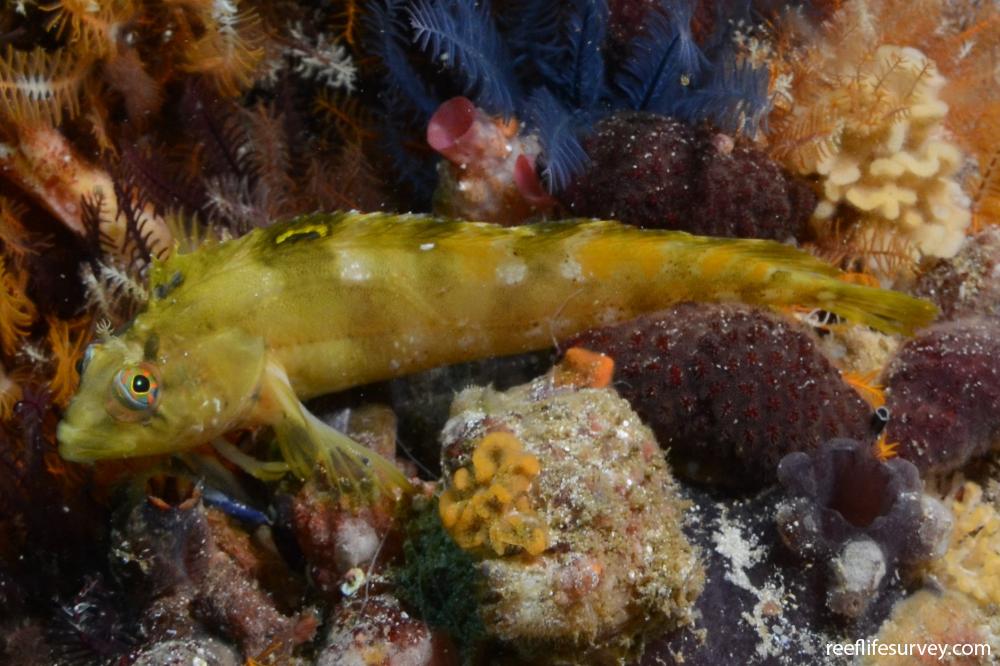Clinus venustris
Speckled klipfishSame Genus
Distribution
Description
Colour and patterning highly variable, from uniform to mottled with irregular bands. Colouring can be red, green, yellow, brown, black, orange and purple. Most distinctive feature is a black-edged light stripe extending obliquely behind eye, often with other narrow black lines radiating from eye and on cheek. Bottom dwelling in tide pools and subtidal areas.
Information
Max Size: 12 cm
Sea Temperature Range: 14.9-22.3°C
Depth: N/A
Habitat Generalization Index: N/A
Also referred to as the SGI (Species Generalisation Index), this describes the habitat niche breadth of the species. Species with values less than 15 are found in a relatively narrow range of reef habitat types (specialists), while those over 25 may be found on most hard substrates within their range (generalists). Learn more here.
Conservation and Rarity
IUCN Status: Not Evaluated
Occurrence: Widespread (81.8% of sites)
Occurrence describes how often the species is found on surveys within its distribution. It is calculated as the % of reef sites surveyed by RLS divers across all the ecoregions in which the species has been observed
Abundance: Few (2 per transect)
Abundance is calculated as the average number of individuals recorded per RLS transect, where present.
















